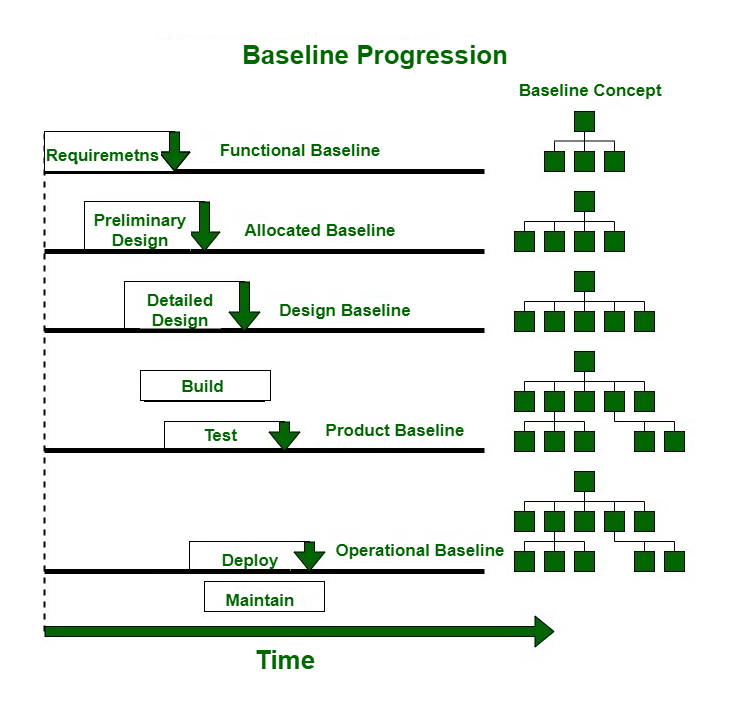Baseline items in Software Development
Last Updated :
10 Aug, 2020
IEEE (IEEE Std. No. 610.12-1990) defines baseline as an agreed description and review of attributes of product, that afterward serve as basis for further development and defining change, and this changing can be done only through formal change control procedures”.
A baseline is milestone and reference point in software development that is marked by completion or delivery of one or more software configuration items and formal approval of set of predefined products is obtained through formal technical review. Baseline is shared project database. It is task of Software Configuration Management (SCM) that is used to maintain integrity of set of products.
Main aim of baseline is to reduce and control vulnerability i.e. Weakness of projects that can easily affect project and leads to changes that are uncontrollable. This can be achieved by fixing and changing configuration items (various key deliverables) in the development life cycle of product at some critical points. Each element that is associated with baseline needed to be kept under formal change control.
Process :
- Elements need to be documented in proper way and reviewed to find if there is an issue of design model. If any error or defect is found, then these errors and defects are corrected and fixed.
- All parts of model are being reviewed properly and all problems found are being fixed and approved.
- Design base model is now Baseline.
- Any further changes in the program architecture that is actually documented in the design model can be allowed to be done only after each has been evaluated and approved.
Baseline Components :
A typical baseline includes following components :
- Functional Baseline –
Operation Document, System requirements.
- Allocated Baseline –
High-level document, Preliminary Design, Interface control documents.
- Design Baseline –
Detailed design documents.
- Product Baseline –
Source and executable code units, final system specifications, user and maintenance manuals, Hardware and software specifications,
- Operational Baseline –
Source and executable code units, final system specifications, user and maintenance manuals, acceptance test plans, test procedures, site integration test cases and data sets and test reports
- Acceptance Test –
Source and executable code units, integration test plans, test procedures, test cases, and data sets and test reports
- Integration Test –
Source and executable code units, unit test plans, test procedures, test cases, and data sets and test reports
- Unit Test –
Source and executable code modules
Example :

Like Article
Suggest improvement
Share your thoughts in the comments
Please Login to comment...